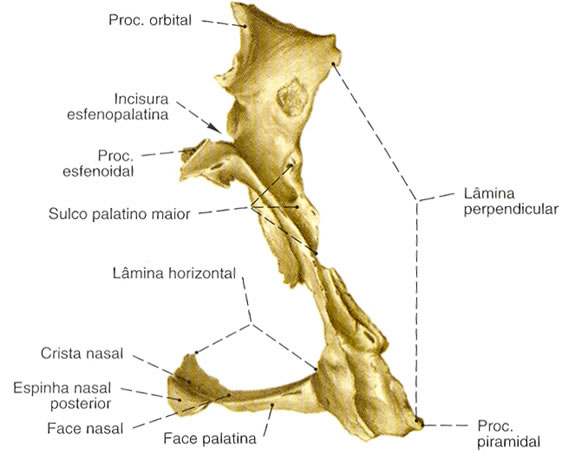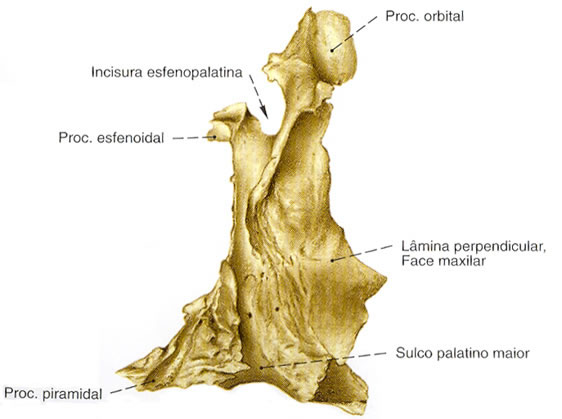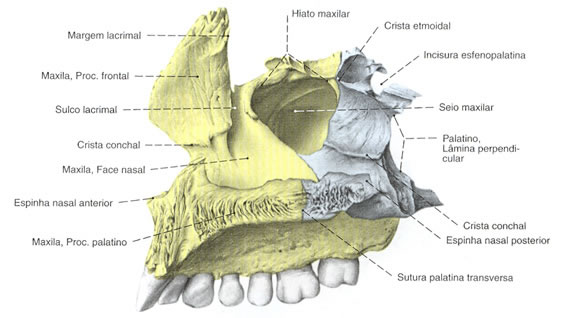Palatine
It forms the posterior part of the hard palate, part of the floor and lateral wall of the nasal cavity, and the floor of the orbit.
It is formed by a vertical and a horizontal part and presents 3 processes: pyramidal, orbital and sphenoidal.
Horizontal part
Features two faces and three edges:
- Nasal Face – forms the floor of the nasal cavity
- Inferior surface (Palatine) – forms part of the hard palate
- Anterior Border – articulates with the maxilla
- Posterior Edge – serves as the insertion of the soft palate and uvula
- Medial Edge – articulates with the palatine bone on the opposite side
Vertical part
Features two faces and four edges:
- Nasal Face – articulates with the inferior and middle turbinates
- Maxillary Face – articulates with the maxilla
- Anterior Edge – is thin and irregular
- Posterior Border – articulates with the sphenoid bone
- Superior Border – articulates with the body of the sphenoid bone
- Bottom Edge
Law Suit
- Pyramidal Process – articulates with the maxilla
- Orbital Process – articulates with the maxilla, sphenoid, ethmoid. It forms part of the floor of the orbit
- Sphenoid Process – articulates with the sphenoid bone
The Palatine articulates with 6 bones: Sphenoid, Ethmoid, Vomer, Maxilla, Inferior Nasal Concha and with the Palatine bone on the opposite side.
| PALATINE - BACK VIEW |
 |
| Source: SOBOTTA, Johannes. Atlas of Human Anatomy. 21 ed. Rio de Janeiro: Guanabara Koogan, 2000. |
| PALATINE - SIDE VIEW |
 |
| Source: SOBOTTA, Johannes. Atlas of Human Anatomy. 21 ed. Rio de Janeiro: Guanabara Koogan, 2000. |
| PALATINE (gray) ASSOCIATED WITH THE BONES OF THE FACE |
 |
| Source: SOBOTTA, Johannes. Atlas of Human Anatomy. 21 ed. Rio de Janeiro: Guanabara Koogan, 2000. |
